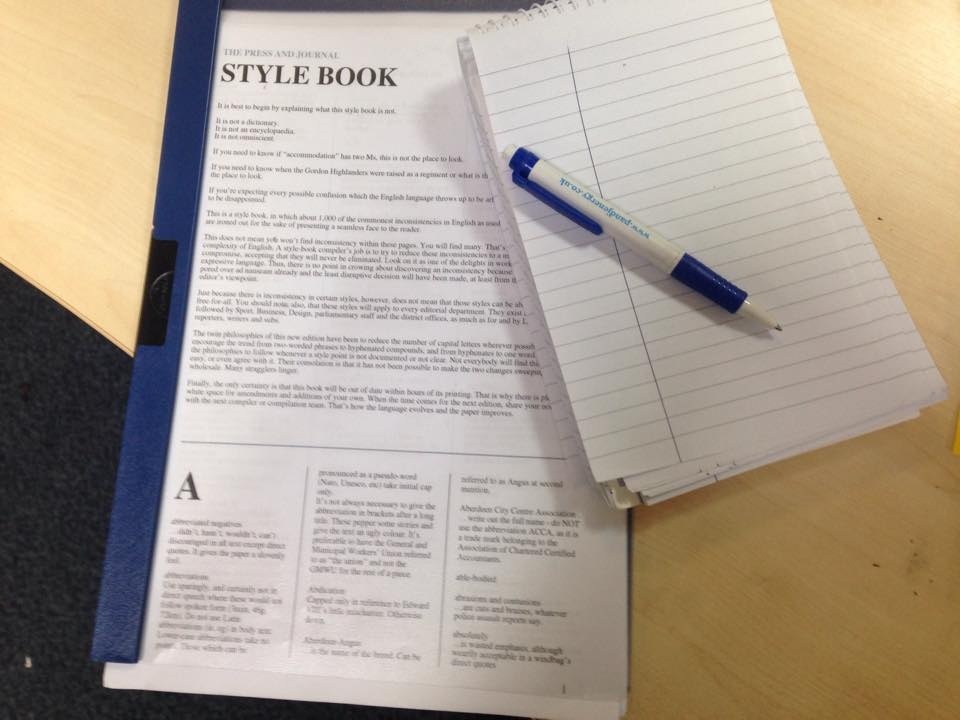Upon arrival at the Press and Journal, new reporters are issued with their own secular Bible in the form of the ‘style guide’.
And just like the Good Book, the guide is shrouded in mystery- thought to be composed by numerous authors over many years- it lays down the laws of language expected in the publication.
English is a malleable language and the style guide is intended to ensure continuity.
Sub-editors must learn their 42-page style guide like medieval priests learned Leviticus.
But what does this mean in practice?
As the book explains in its preface: “This is a style book, in which about 1,000 of the commonest inconsistencies in English as used in the Press and Journal are ironed out for the sake of presenting a seamless face to the reader.”
For instance in the P&J a Police Constable is quoted as “Constable Adams” rather than “PC Adams”, we say “aircraft” rather than ‘planes’ or, heaven forbid, the Americanism of ‘airplanes’.
The term ‘boffin’ is banned and Peterculter is simply ‘Culter’ unless you’re referring to Maryculter in which case it’s written in full.
You do not get the title of Doctor in the P&J unless you have completed medical training, a Phd in philosophy will earn you the title Mr/Miss/Mrs/Ms unless you completed it after your degree in medicine.
More interesting points come when the book describes Doric.
It states: “Contrary to popular belief, this north-east dialect of Scots contains remarkably few apostrophes, but lots of double As.
“The use of apostrophes to replace letters that are missing in English implies that Scots is a derived subordinate of English. It isn’t. So don’t.”
The guide takes a tough stance on the creeping spread of Americanisms into British English.
We have no ‘lines’ but rather ‘queues’, witnesses don’t ‘take the stand’ but ‘give evidence’ and it is always a ‘car boot’ and never a ‘trunk’.
Furthermore the Union Jack is only flown from a ship otherwise it’s the Union flag and manhood begins at 18 but a boy between 15 and 18 may be described as a ‘youth’. Girls are not youths.
These are just some of the many, many style points covered in the book.
You may think journalists write what they want, but I hope to have proved that some of the terms used are for a reason.
As this is an online article and has not been through the sub-editors, I’m sure I’ve broken its laws many times
